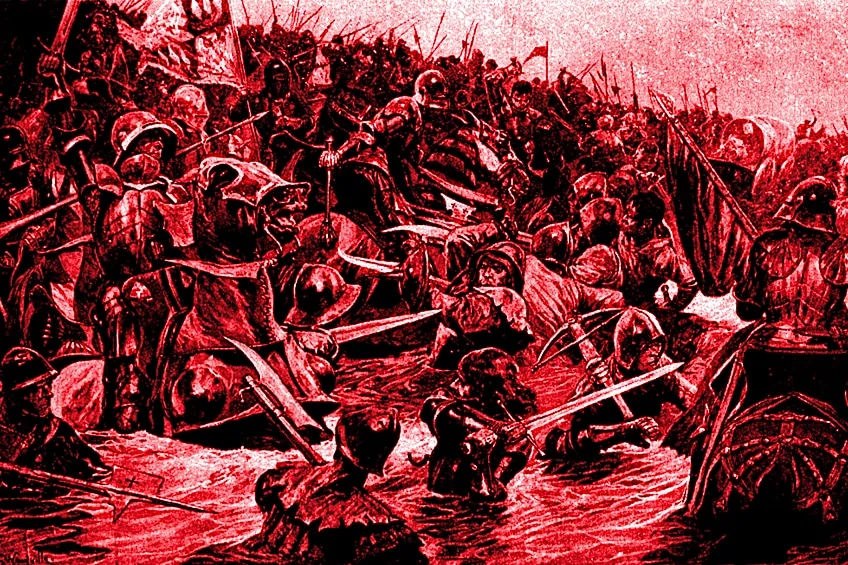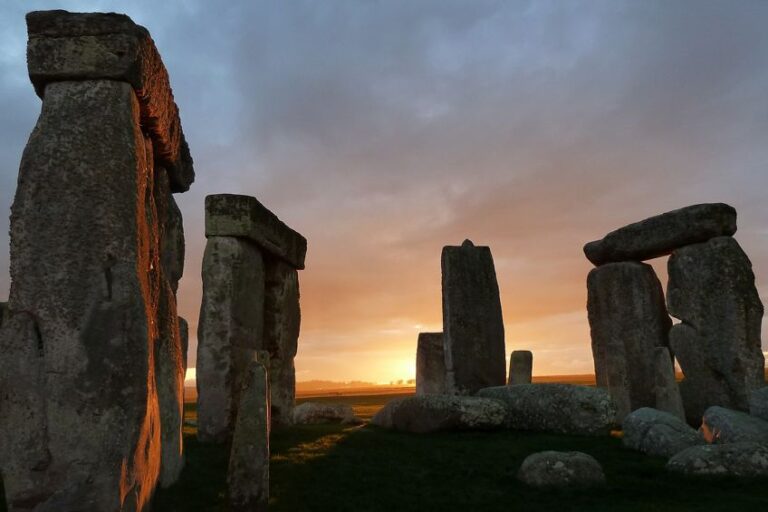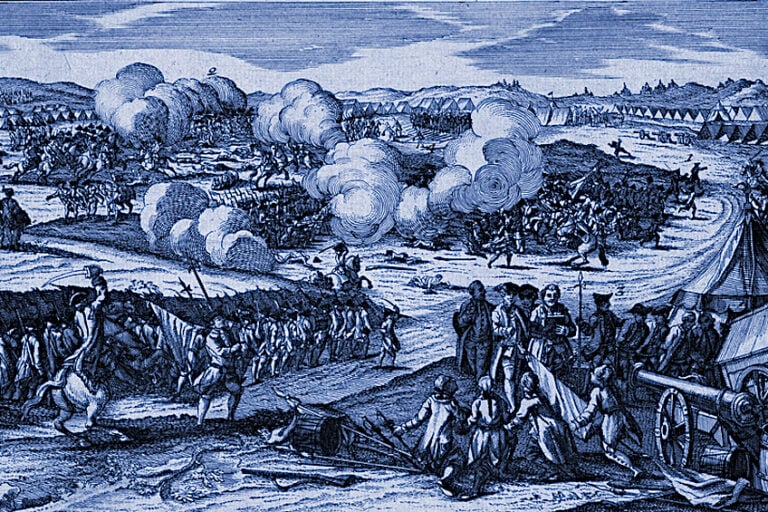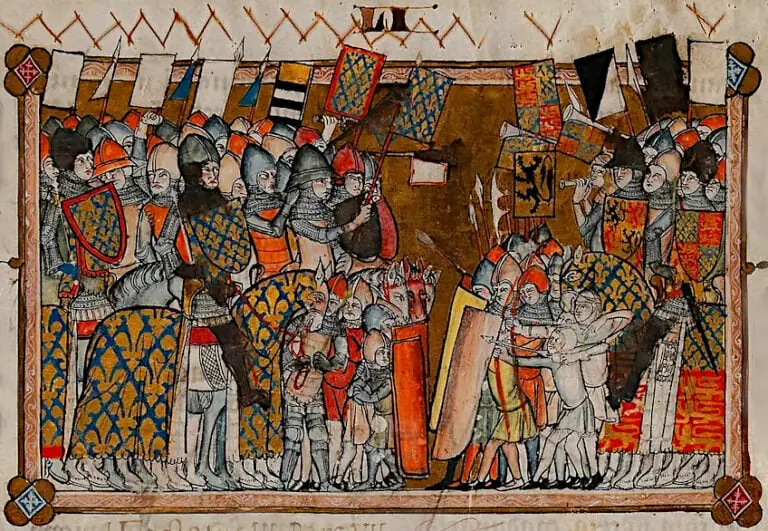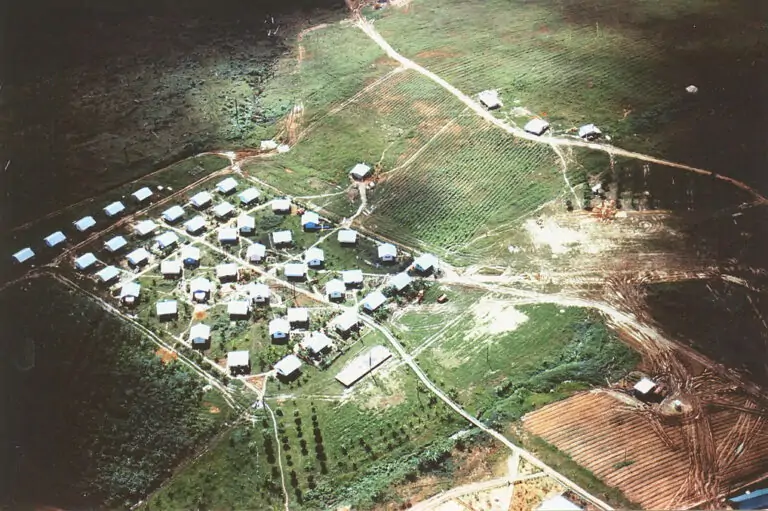Battle of Towton – Legendary Bloodbath in the War of the Roses
Given the numerous conflicts that characterized the Medieval era in England, it is notable that the Battle of Towton is often considered one of the country’s most significant battles. Fought on March 29th 1461, the battle saw the English Houses of Lancaster and York pitted against each other in a brutal feud over the crown of England. The battle itself was part of a larger conflict that we have come to know as the Wars of the Roses, and it occurred as the result of a series of political, economic, social, and religious factors that led to the destabilization of the English monarchy. The Battle of Towton is considered by historians to be one of the bloodiest battles ever fought on English soil. Join us as we delve into the many aspects that led to its occurrence, the events of the battle itself, and the consequences it wrought in its aftermath.
What Led to the Battle of Towton?
| Name of the Battle | The Battle of Towton |
| Overarching Conflict | The Wars of the Roses |
| Date | 29th March 1461 |
| Location | Towton, England |
| Combatants | The House of Lancaster versus the House of York |
The Battle of Towton was but one of many skirmishes to transpire during the conflict between the Yorkists and Lancastrians, but its significance lies in the substantial death toll. The events that led to it were complex and multifaceted, and it is essential to understand these factors in order to develop a clear understanding of why it came to be that over 28 000 men would die in just a single day of fighting. Let us, then, examine the various facets of Medieval English society that brought about the Battle of Towton and their importance in shaping the conflict’s outcome.
Opposing Sides and Key Figures
As mentioned, the Wars of the Roses was fought between the Yorkist and Lancastrian houses. The latter house had King Henry VI as its leader, who was considered a weak ruler unfit for the role of monarch. However, his wife, Margaret of Anjou, was a politically brilliant figure whose aid to the Lancastrian house’s cause gave the faction a lethal edge among its leadership. Hailing from the north of England, the house of Lancaster boasted the support of most Englishmen from the region.
The House of York followed Edward IV as its leader, a charismatic figure who was considered to wield power more wisely than his opponent. More so, his claim to the English throne was more than legitimized through his being the descendant of Edward III. Not only did he have the support of most of the southern landowners in England, but he also had the favor of many powerful magnates and the English nobility.
 Portrait of King Edward IV by an unknown artist (1618); Ann Longmore-Etheridge, CC BY-SA 4.0, via Wikimedia Commons
Portrait of King Edward IV by an unknown artist (1618); Ann Longmore-Etheridge, CC BY-SA 4.0, via Wikimedia Commons
Political Factors
The battle occurred during the Wars of the Roses, which was a protracted conflict between England’s most powerful noble factions of the time; the House of York and the House of Lancaster. The latter was founded by King Henry IV, who would seize control of the English throne from Richard II in 1399. The descendants of Henry VI would carry the crown of England for two more generations until King Henry VI was deposed by Richard’s son in 1461.
Lacking the political and military prowess of his father, Henry VI’s reign would be short-lived and marked by instability and corruption within his court. His weakness would be what allowed the Yorkists to contest the Lancastrian throne. The members of the House of York would claim legitimacy to the throne of England on account of their lineage stemming from Edmund of Langley, the son of Edward III.
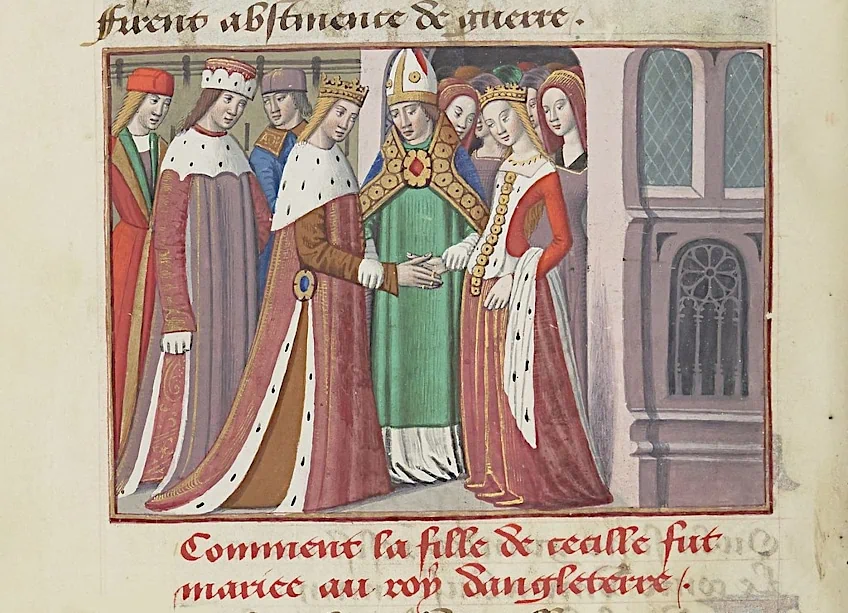 Marriage of Henry VI and Marguerite of Anjou from Les Vigiles de Charles VII by an unknown author (1484); Bibliothèque nationale de France, Public domain, via Wikimedia Commons
Marriage of Henry VI and Marguerite of Anjou from Les Vigiles de Charles VII by an unknown author (1484); Bibliothèque nationale de France, Public domain, via Wikimedia Commons
The first battle of the Wars of the Roses would occur in May of 1455, which ended in the House of York defeating the Lancastrians at St. Albans. This victory against the ruling house of England would spark a series of political and military clashes between the two factions, ultimately leading to the Battle of Towton. There is much nuance to be explored when it comes to the politics behind the build-up to the battle, but it can be most simply expressed as a power struggle between the Lancastrians and the challenging House of York. With neither side being in short supply of followers, the political climate of England was at that time incredibly unstable.
Social Factors
There are also social factors to consider when discussing the Wars of the Roses. English society was majorly stratified at the time, meaning that the nobility of England played the largest hand in determining the landscape of its politics. Both houses were composed of wealthy nobles who wielded immense power that they would exploit in their competition over influence and control of the kingdom. The conflict was not entirely limited to those in power, however, as the common folk were divided in their support of either house, which would allow them a role to play in the events leading up to the Battle of Towton.
The Wars of the Roses were fought primarily in the countryside, and many of the battles were fought by armies made up of commoners. These armies were raised by nobles who promised them rewards for their support. This led to a situation where the common people were pitted against each other in a struggle for power. The social unrest that resulted from this conflict played a significant role in shaping the outcome of the war.
The overarching war itself was primarily fought in the countryside regions of England so the involvement of commoners was an inevitability. In fact, many of the armies that participated in the battles were composed of fyrds, which were contingents of common folk who would take up arms when called upon by the houses to whom they swore fealty. This created a climate wherein commoners would find themselves pitted against each other despite being of the same caste. With this came substantial degrees of social unrest, which would influence the events and outcome of the war and the Battle of Towton itself.
Economic Factors
Wealth is, of course, one of the strongest incentives in any war as remains the case to this very day. Agriculture was a massive part of feudal England’s economic infrastructure so arable land was fiercely contested between the two houses. With the agrarian economy already vulnerable to vacillations in crop yields and natural disasters, economic instability was an issue fraught throughout England during the war. This would tie in with the social factors at play, fanning the flames of conflict even further. In terms of the economic factors at play during the Wars of the Roses, however, the buck did not stop there.
 Manuscript illumination of 15th Century farmers (between 1412 , 1460, and 1440); Limburg brothers , Public domain, via Wikimedia Commons
Manuscript illumination of 15th Century farmers (between 1412 , 1460, and 1440); Limburg brothers , Public domain, via Wikimedia Commons
The House of Lancaster received its financial support primarily from rich merchant guilds whose investments were seeded with the intention of expanding their lucrative trade networks. On the other hand, the House of York received its support from wealthy landowners maintaining and expanding the affluence and influence afforded by their station.
The economic sectors of England’s economy that funded the war efforts of either side stood diametrically opposed to one another, thus again furthering the divide between Englishmen in both the economic and social context.
Religious Factors
Medieval England was an incredibly religious Kingdom and it goes without saying that its staunch Christian values had a big role to play in the conflict. Religion was a powerful tool wielded as a means to form the values and beliefs of the English people, and the war itself was always framed by both sides within the context of Christianity. Most notably, both houses claimed to have the support of their God and the church institution played a key role in framing and propagandizing the conflict.
The House of Lancaster received its religious support from the Bishop of Winchester, who considered them to have been ordained by God to be the rulers of England. On the other side of the fence, the House of York was supported by the Archbishop of Canterbury, who declared their divine right to the throne of England.
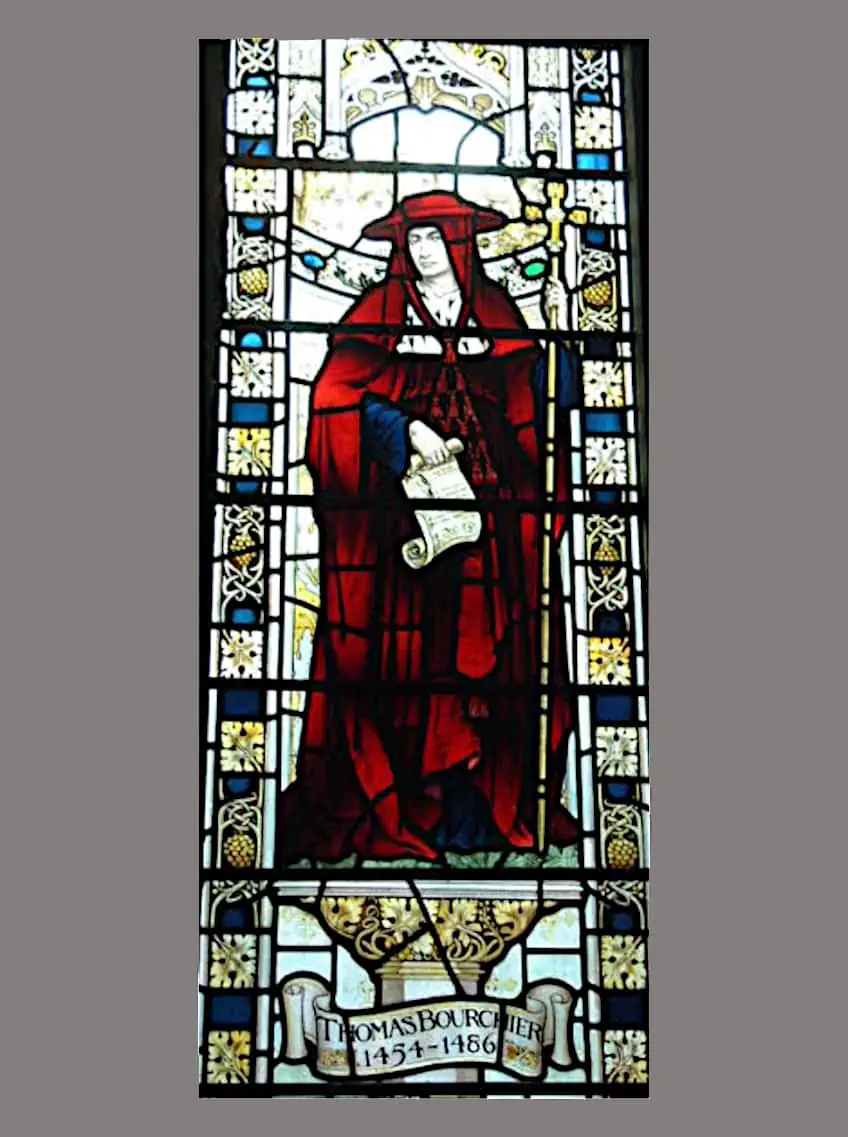 Stained glass window depicting Thomas Bourchier (c.1404-1486), Archbishop of Canterbury from 1454 to 1486; See page for author, Public domain, via Wikimedia Commons
Stained glass window depicting Thomas Bourchier (c.1404-1486), Archbishop of Canterbury from 1454 to 1486; See page for author, Public domain, via Wikimedia Commons
With religion being an inextricable component of medieval England, using religion as a means of legitimizing their claims to the throne was essential for either side to win over the hearts and minds of their people. This only served to further expand the social divide between the English population.
Culmination
The Battle of Towton would come as a culmination of all these factors and how they lent toward the destabilization of the nation’s monarchy. As we can ascertain from the above information, the political, social, economic, and religious factors at play all contributed interconnectedly to the ensuing conflict. This instability set the stage for the Battle of Towton, an event that would become the bloodiest battle ever waged on English soil.
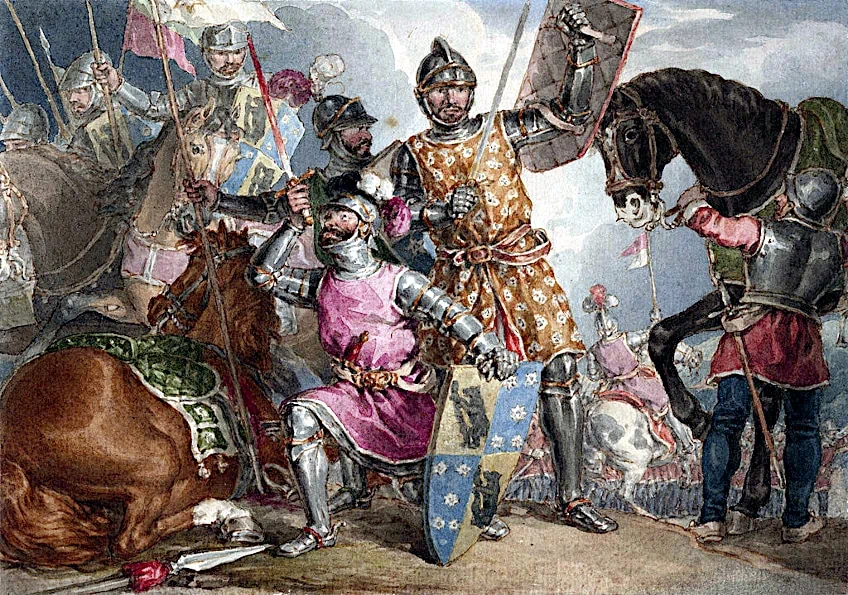 King Henry VI, part III, act II, scene III, Warwick, Edward, and Richard at the Battle of Towton by John Augustus Atkinson (late 18th Century); John Augustus Atkinson (1775–1833), Public domain, via Wikimedia Commons
King Henry VI, part III, act II, scene III, Warwick, Edward, and Richard at the Battle of Towton by John Augustus Atkinson (late 18th Century); John Augustus Atkinson (1775–1833), Public domain, via Wikimedia Commons
The Battle of Towton was nothing short of a defining moment in the history of England and its legacy still captivated the minds of people to this very day. However, it is well worth understanding the context behind what led up to it and the complexity thereof.
What Happened at the Battle of Towton?
The battle of Towton became an inevitability in 1461 when the wartime atrocities committed by the Lancastrian army in the south of England cost Henry VI and Margaret their support within the region. While the king and his wife fled north, Edward of York pushed toward London to seize control of the English throne.
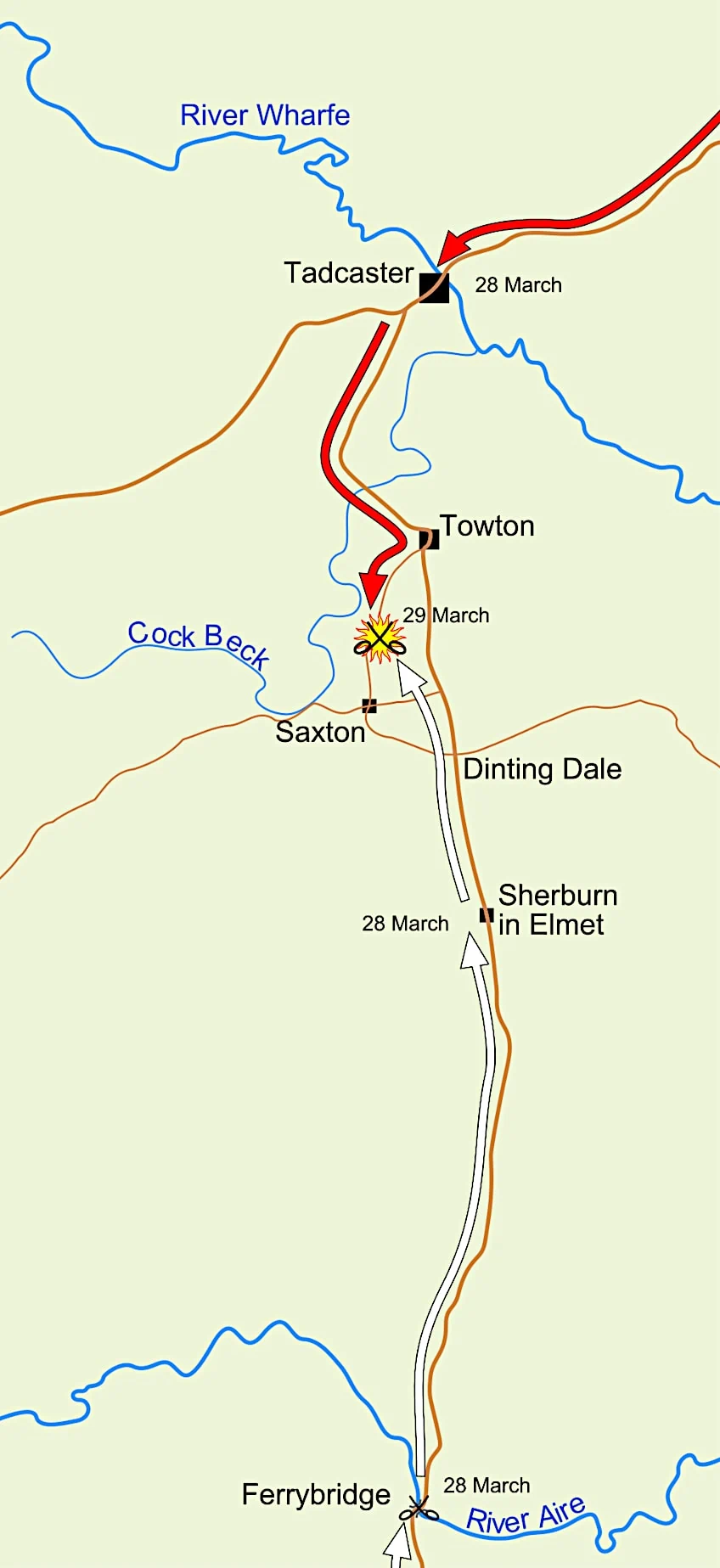 Map showing the movements of the Yorkist and Lancastrian armies in the lead-up to the Battle of Towton (29 March 1461); Jappalang, CC BY-SA 3.0, via Wikimedia Commons
Map showing the movements of the Yorkist and Lancastrian armies in the lead-up to the Battle of Towton (29 March 1461); Jappalang, CC BY-SA 3.0, via Wikimedia Commons
Over the following weeks, both the Lancastrians and Yorkists used the time to muster allies and soldiers in preparation for the now-certain showdown. By the 13th of March, Edward marched his army north and arrived in Nottingham nine days later where he was informed of a Lancastrian army some 30 000 – 35 000 men strong camped to the south of York.
While the jury remains out on the exact size of Edward’s fighting force, it is agreed that he was at a numerical disadvantage.
First Blood
On the 28th of March, King Edward ordered a contingent of troops led by sir Fitzwalter to ride ahead of his army and secure the bridge of Ferrybridge that Henry VI’s army would need to ford the Aire River. However, a contingent of Lancastrian cavalrymen who had already crossed the river was waiting in preparation for an ambush. With the element of surprise on their side, the Lancastrian cavalry laid waste to the Yorkist contingent, many of whom were either slaughtered or drowned in the river.
Battle of the Bridges
Understanding full well that the Lancastrian army situated two miles behind the bridge would be ready to swoop in and crush his forces should they attempt to push back the cavalrymen and then cross the river, Edward instead dispatched a horseback vanguard ahead of his army to drive the enemy back across the bridge. He then personally marched the bulk of his forces to the aid of his vanguard.
 The Battle of Towton by Richard Caton Woodville (1922); Richard Caton Woodville, Jr., Public domain, via Wikimedia Commons
The Battle of Towton by Richard Caton Woodville (1922); Richard Caton Woodville, Jr., Public domain, via Wikimedia Commons
Concerned about the Yorkists managing to advance across the bridge, Henry VI ordered the demolition of the crossing. Prepared for this event, the Yorkists constructed a raft to continue their advance. The Lancastrians, however, managed to win control of this raft and a skirmish continued for several hours until Edward’s army found a means to ford the river further up north near Castleford where they then established a camp.
The Battle of Towton Begins
The dawning of the 29th of March brought with it a snowstorm that landed on the heads of both armies. At 11 am, the Yorkist army began marching further north before setting up camp atop a hill 10 miles to the south of York. Along the ridgeline of the hill stood a mile-long column of Yorkist soldiers while the Lancastrian army assumed a position north of them on higher ground near the meadowlands south of Towton. With the advantage of having the high ground and a more stable position that did not pose the risk of routing toward an unfordable river, the Lancastrians saw fit to dispatch a contingent of cavalrymen who would hide in the woodlands to the left of the Yorkist position.
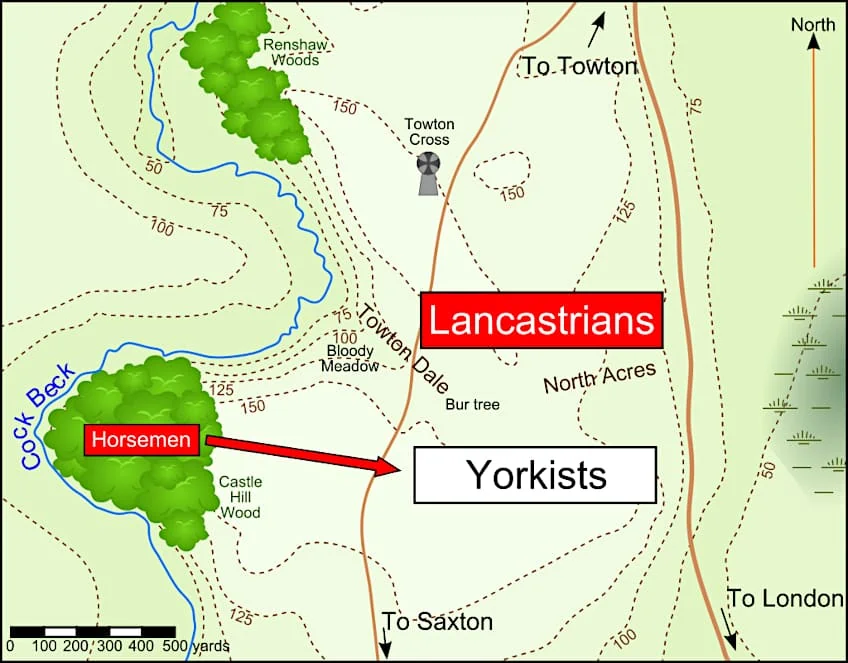 Deployment of forces at the start of the Battle of Towton; Jappalang, CC BY-SA 3.0, via Wikimedia Commons
Deployment of forces at the start of the Battle of Towton; Jappalang, CC BY-SA 3.0, via Wikimedia Commons
Favorable Winds
Unwilling to move from their superior position nearly 100 feet above the Yorkists, the Lancastrians decided to wait for their enemy to approach first. The battle would commence with the Yorkist archers descending their smaller hill and pressing forward until they were within an effective firing range. Despite the topography of their shaky position being a massive disadvantage, however, the Yorkists found the weather to be far more forgiving.
As the archers of either army exchanged volleys, the Lancastrian archers found themselves firing arrows against powerful winds that prevented their missiles from reaching the Yorkist lines.
If the legends are to be believed, all the Lancastrians could hear through the strong gusts that rendered their volleys impotent were the jeers and laughter of the Yorkist archers as they collected their short-fallen arrows and fired them back toward Henry VI’s soldiers.
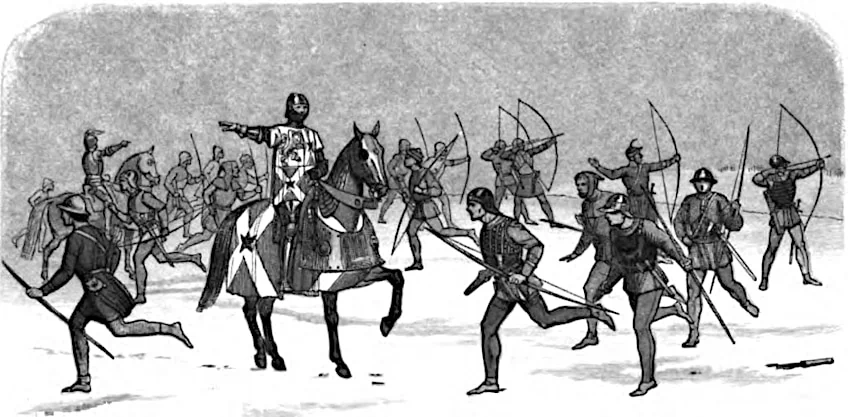 Illustration depicting William Neville ordering his archers to take advantage of the wind and advance closer to the Lancastrians in the Battle of Towton; James William Edmund Doyle, Public domain, via Wikimedia Commons
Illustration depicting William Neville ordering his archers to take advantage of the wind and advance closer to the Lancastrians in the Battle of Towton; James William Edmund Doyle, Public domain, via Wikimedia Commons
After suffering too heavy a loss in their numbers, the Lancastrian army was forced to unperch themselves from their presumptively advantageous position and march toward the Yorkist lines.
Close and Personal
The Lancastrian army was forced to take up melee weapons and charge toward their enemy, whose archers let out several more volleys before retreating behind their own lines. The Lancastrians submitted the opposing hill to give battle at close quarters, at which point their hidden cavalrymen charged the left flank of the Yorkist line.
Although this flank attack dealt a significant blow to the structure of the Yorkist army, even nearly managing to rout it, Edward himself would rally his reserve forces to re-attain the stability of his lines. Although this prevented the impending routing of his units, Edward still faced the issue of his forces being outnumbered.
Slowly but surely, the Yorkists were pushed down the hill as the Lancastrians stole more and more ground through their sheer numerical superiority.
A Timely Arrival
It seemed for a time that the Lancastrians were on the verge of destabilizing the Yorkist line well enough to ensure Henry’s defeat. However, it would not be too long before contingencies for Norfolk would appear on the battleground and wreak havoc on the Lancastrian left flank.
Soon thereafter, it would be the Lancastrian army that would find itself being routed out of position. The arrival of the Norfolk soldiers would be the crushing blow that destabilized the cohesion of the Lancastrian army. This would ultimately lead to the Yorkists claiming a decisive victory over their foes despite being fewer in number, even if we were to consider those from Norfolk who joined later in the fight.
 Impact of arrival of Norfolk forces at the Battle of Towton; Jappalang, CC BY-SA 3.0, via Wikimedia Commons
Impact of arrival of Norfolk forces at the Battle of Towton; Jappalang, CC BY-SA 3.0, via Wikimedia Commons
According to historians and what records of the event remain available to us, it is believed that over 20 000 Lancastrian troops met their end at the Battle of Towton. As for the Yorkists, it is said that they suffered roughly 10 000 casualties.
All in all, the cumulative death toll between the two armies would make the battle of Towton the bloodiest battle to ever be fought in England – even to this day. It is important to note, however, that the exact figures of the death toll are a matter of debate among historians, with many believing the number of casualties to be as low as 9 000.
Aftermath
Following the Battle of Towton, Henry VI would have to flee from England with his wife and son to Scotland, leaving Edward in a substantially stronger position back home. The battle marked the conclusion of the first phase of the Wars of the Roses and saw to it that the House of York would become the dynasty to assume control of the throne of England.
Following the catastrophic death toll inflicted on the Lancastrian army, the house would not be able to create another army capable of combating the Yorkists for three years. In later years, Henry VI would be deposed and incarcerated in the Tower of London. The freshly minted King Edward, however, would go on to rule over England for 22 years.
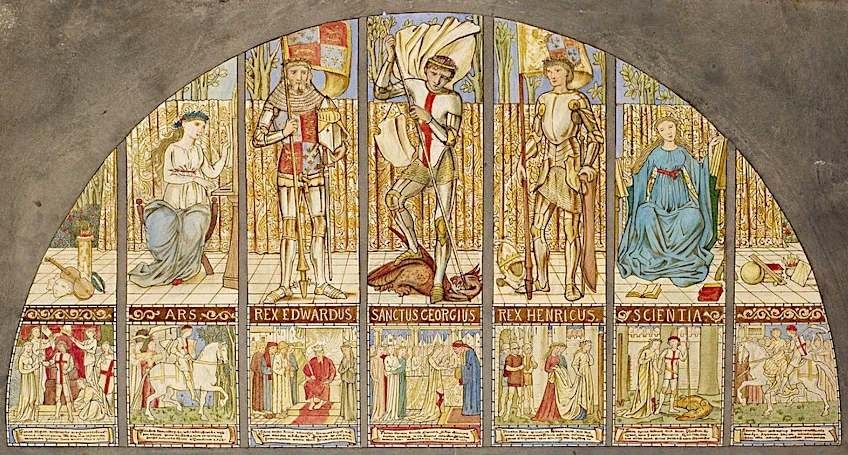 Wars of the Roses – Edward IV, Henry VI, St George with Allegory by Edward Burne-Jones (1862/64); Edward Burne-Jones, Public domain, via Wikimedia Commons
Wars of the Roses – Edward IV, Henry VI, St George with Allegory by Edward Burne-Jones (1862/64); Edward Burne-Jones, Public domain, via Wikimedia Commons
In conclusion, the Battle of Towton proved to be not only the bloodiest battle fought in England, but also one of the bloodiest battles fought in the entirety of Europe at that time. It showcased the superior leadership of Edward compared to Henry VI, who would be forced to concede his crown to the former following his army’s defeat at Towton. The battle highlighted the lethal efficiency of the English longbow, and the essentialness of considering logistics when waging war.
Frequently Asked Questions
Who Won the Battle of Towton?
The Battle of Towton was won by the House of York, which was led by King Edward IV. Despite the numerical inferiority of his army numbers, he managed to defeat the Lancastrian army and later assume control of the throne of England.
What Happened After the Battle of Towton?
After losing to King Edward IV, Henry VI was forced to concede control of the English throne to his rival and flee with his wife and son to Scotland. He would later be captured by Edward and imprisoned in the Tower of London. Edward went on to become the King of England and reigned as monarch for the next 22 years.
Was the Battle of Towton the Bloodiest Battle Ever Fought In England?
According to the research of historians and the first-hand accounts of the event that remains accessible to us, it is believed that over 20 000 Lancastrian troops were slain at the Battle of Towton. As for the Yorkist army, it is believed that they suffered roughly 10 000 casualties. In total, the collective death toll between the two armies would make the battle of Towton the bloodiest battle to ever be fought in England – even to this day. However, it is worth noting that some historians have contested the approximated death toll. Some believe the number to be an exaggeration of the truth, and there are historians who would argue that the death toll could have been as low as 9 000. Nevertheless, the Battle of Towton continues to capture the interest of people worldwide.

I am deeply passionate about history and am constantly fascinated by the rich and complex stories of the past. As the editor-in-chief of learning-history.com, I have the opportunity to share this passion with a wide audience through the creation and distribution of engaging and informative content about historical events, persons, and cultures. Whether it’s through writing articles and blog posts or creating videos or podcasts, I strive to bring the past to life in a way that is both accurate and enjoyable. My expertise in history, combined with my strong writing and communication skills, allows me to effectively communicate complex historical concepts and make them accessible and interesting to a wide range of readers. I am truly grateful for the opportunity to share my love of history with others through my work on learning-history.com.

